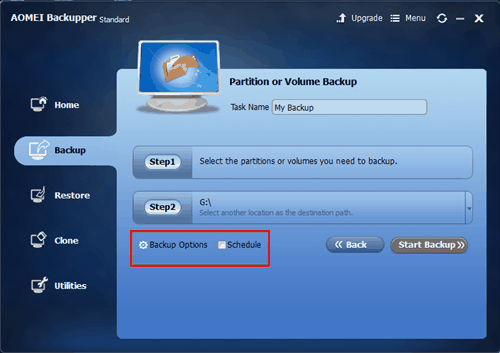
- #Readynas usb backup how to
- #Readynas usb backup install
- #Readynas usb backup serial
- #Readynas usb backup drivers
- #Readynas usb backup download
Use cat /proc/partitions to find the ~120MB internal storage and then use dd to create a copy of the internal storage to the /tmp directory and then use scp to copy the backup to a different computer. If you want to be able to go back to stock Netgear firmware in the future it is important to backup the internal storage first.
#Readynas usb backup install
To make the OpenWrt install permanent the firmware needs to be written to the internal storage. The nas now runs OpenWrt from RAM which is not persistent across reboots.
#Readynas usb backup serial
Allow the system to boot from the USB stick and once done use nano / vi in your serial console to adjust /etc/config/network such that the nas can connect to your network. Once grub starts you can release the backup button.

Keep the backup button pressed until you see a grub screen with openwrt in your serial terminal. Press the backup button while powering on the nas.

Plug the USB stick into the (front) USB port of the nas. config and additional packages and write the resulting ext4-combined.img file to an USB stick using dd. Some other useful packages are: nano kmod-hwmon-core kmod-hwmon-it87 kmod-thermal kmod-usb-core kmod-usb-ehci kmod-usb-ohci kmod-usb-uhci kmod-usb2 kmod-usb3 luci.īuild the firmware with the custom. So the kmod-sky2 package need to be included in the firmware to make sure there is a fully functioning network connection in OpenWrt.
#Readynas usb backup drivers
The standard 圆4 image contains some network drivers by default but not the marvell drivers needed for this nas. config file to 96MB while leaving the kernel at 16MB worked fine for me. Adjusting the rootfs size settings in the. To make the image fit the rootfs partition size needs to be reduced to around 100 MB such that the kernel + rootfs is less than ~120 MB. The space on the internal (USB) storage is around 120 MB so a standard x86-64 image is not going to fit. To avoid having to re-configure your serial connection half way through the install process you can choose to set the uart speed in OpenWrt to 9600 by adjusting the. The standard uart connection of the nas works at 9600 speed while OpenWrt uses 115200 by default.
#Readynas usb backup how to
Read the relevant web pages to get an idea how to put together your own customised images.
#Readynas usb backup download
Prepare your linux build system and download the x86-64 image builder files.

1 create a customised x86-64 image using the image builder and write it to an USB drive.Power down the nas for now.Ī summary of the steps to install OpenWrt are as follows: Move through the different menus and set values to optimum defaults. Once you see the bios screen appear you can release the backup button. At the same time keep hammering the delete key in your serial console to get to BIOS screen. Press the backup button while powering on the unit. My unit had some issues so I decided to go into the bios and reset all values to optimum defaults, if your NAS is working ok you can skip this step.

Running picocom -b 9600 /dev/ttyUSB0 in your linux terminal should show you the output of the boot process of the nas. Do not use 5V and remember to cross RX and TX to your USB serial adapter. Start with connecting the usb serial connector to the nas using the pins on the back of the NAS. This post is mainly intended as a starting point / reference for others and not a perfect list of commands to run through to get everything working. It took me a few tries to get OpenWrt installed so I'm writing things down from memory. I have no idea if OpenWrt is compatible with the filesystem used by Netgear so make sure you have a backup of all your data before you start. Requirements: ReadyNas Ultra 2, usb serial connector, usb stick, Linux machine / VM that is setup to run the imagebuilder to put a custom OpenWrt image together, basic linux knowledge / experience.Īnything you do to your nas is your own responsibility etc. So the plan is to run OpenWrt from the internal ~120MB (USB) storage such that the hard drives are just for data storage and can be put to sleep when not in use. Via serial it possible to access the bios and there is an easy method to make the NAS boot from USB. Netgear has made the UART pins available on the back of the unit under a sticker so there is no need to disassemble the NAS. Netgear still has the firmware downloads and other recovery tools available but I don't care about stock firmware so didn't bother try to restore it to factory.


 0 kommentar(er)
0 kommentar(er)
